
Illustrative Math Alignment: Grade 8 Unit 3
Functions and Volume
Lesson 22: Volume As a Function of . . .
Use the following Media4Math resources with this Illustrative Math lesson.
| Thumbnail Image | Title | Body | Curriculum Topic |
|---|---|---|---|

|
Video Transcript: Algebra Nspirations: Functions and Relations, 2 | Video Transcript: Algebra Nspirations: Functions and Relations, Part 2
This is the transcript for the video of same title. Video contents: In this Investigation we look at functions. This is part of a collection of video transcript from the Algebra Nspirations video series. To see the complete collection of transcripts, click on this link. Note: The download is a PDF file. Video Transcript LibraryTo see the complete collection of video transcriptsy, click on this link. |
Applications of Functions and Relations and Relations and Functions |

|
Video Transcript: Geometry Applications--Volume of a Pyramid | Video Transcript: Geometry Applications--Volume of a Pyramid
This is the transcript for video entitled: "Geometry Applications--Volume of a Pyramid." This is part of a collection of video transcript from the Geometry Applications video series. To see the complete collection of transcripts, click on this link. Note: The download is a PDF file. Video Transcript LibraryTo see the complete collection of video transcriptsy, click on this link. Video LibraryTo see the complete collection of videos in the Video Library, click on this link. |
Pyramids |

|
Video Transcript: Geometry Applications: 3D Geometry | Video Transcript: Geometry Applications: 3D Geometry
This is the transcript for the video of same title. Video contents: In this program we explore the properties of three-dimensional figures. We do this in the context of two real-world applications. In the first, we look at the three-dimensional structure of Mayan pyramids. These stair-step structures provide a unique opportunity to also explore sequences and series. In the second application we look at the Shanghai Tower as an example of cylindrically shaped structures. |
3-Dimensional Figures and Applications of 3D Geometry |

|
Video Transcript: Geometry Applications: 3D Geometry, Segment 1: Introduction | Video Transcript: Geometry Applications: 3D Geometry, Segment 1: Introduction
This is the transcript for the video of same title. Video contents: We visit ancient Greece to learn about the Platonic Solids. This provides an introduction to the more general topic of three-dimensional figures. This is part of a collection of video transcript from the Geometry Applications video series. To see the complete collection of transcripts, click on this link. Note: The download is a PDF file. Video Transcript LibraryTo see the complete collection of video transcriptsy, click on this link. |
3-Dimensional Figures and Applications of 3D Geometry |

|
Video Transcript: Geometry Applications: 3D Geometry, Segment 2: Pyramids | Video Transcript: Geometry Applications: 3D Geometry, Segment 2: Pyramids
This is the transcript for the video of same title. Video contents: Rectangular Prisms. Mayan pyramids are essentially stacks of rectangular prisms. The volume of each successive level is a percentage decrease of its lower neighbor. This introduces the notion of a geometric sequence and series, including an infinite series. |
3-Dimensional Figures and Applications of 3D Geometry |

|
Video Transcript: Geometry Applications: 3D Geometry, Segment 3: Cylinders | Video Transcript: Geometry Applications: 3D Geometry, Segment 3: Cylinders
This is the transcript for the video of same title. Video contents: The Shanghai Tower in China is a stack of cylindrical shapes, where each successive layer is a percentage decrease of its lower neighbor. As with the previous section, this introduces the notion of a geometric sequence and series. |
3-Dimensional Figures and Applications of 3D Geometry |

|
Video Tutorial: Multiple Representations of Functions | Video Tutorial: Multiple Representations of Functions
This video looks at multiple representations of functions, including symbolic, tabular, and graphic. Examples of linear, quadratic, polynomial, and exponential functions are shown. |
Relations and Functions |
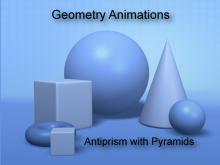
|
VIDEO: 3D Geometry Animation: Antiprisms 2 | VIDEO: 3D Geometry Animation: Antiprism Folding Out into Two Pyramids
This is part of a series of video animations of three-dimensional figures. These animations show different views of these figures: top, side, and bottom. Many of these figures are a standard part of the geometry curriculum and being able to recognize them is important. — CLICK THE PREVIEW BUTTON TO SEE THE VIDEO ANIMATION —Study these animations to learn the basic properties of these 3D figures. In particular, make a note of their sides, edges, and vertices. Look for any symmetries they have. Look for polygon shapes that are familiar. Finally, think of real-world examples that use these figures. Below we also include information about Platonic solids and 2D nets of these 3D figures. To get a better understanding of these 3D figures, study these basic forms. |
3-Dimensional Figures |
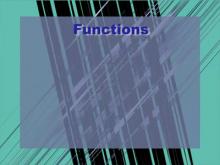
|
VIDEO: Algebra Applications: Linear Functions, 1 | VIDEO: Algebra Applications: Linear Functions, 1
TopicLinear Functions DescriptionIntroduces linear functions with examples like staircases, explaining slope, intercepts, and applications in real-world scenarios. Linear functions are fundamental in understanding mathematical relationships between two variables. The video demonstrates their application in real-life scenarios, enhancing comprehension of key concepts like slope, intercepts, and graphical representation. This foundational knowledge prepares students for more advanced mathematical topics. |
Special Functions and Applications of Linear Functions |
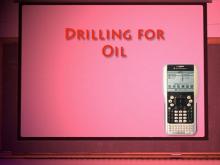
|
VIDEO: Algebra Applications: Linear Functions, 3 | VIDEO: Algebra Applications: Linear Functions, 3
TopicLinear Functions DescriptionUses linear regression to analyze US oil consumption trends, projecting future usage and potential impact of Alaskan oil production. Linear functions are fundamental in understanding mathematical relationships between two variables. The video demonstrates their application in real-life scenarios, enhancing comprehension of key concepts like slope, intercepts, and graphical representation. This foundational knowledge prepares students for more advanced mathematical topics. |
Special Functions and Applications of Linear Functions |
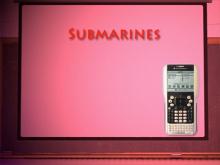
|
VIDEO: Algebra Applications: Rational Functions, 1 | VIDEO: Algebra Applications: Rational Functions, 1
TopicRational Functions DescriptionExplains submarine pressure and volume relationships using rational functions, illustrating depth impacts on vessel integrity and scuba safety. Relevance: This video provides a practical perspective on Rational Functions, making abstract concepts more accessible through real-world applications. |
Rational Expressions and Rational Functions and Equations |

|
VIDEO: Algebra Applications: Rational Functions, 2 | VIDEO: Algebra Applications: Rational Functions, 2
TopicRational Functions DescriptionExamines surface area to volume ratios in animals using rational functions, connecting these ratios to evolutionary adaptations in different climates. Relevance: This video provides a practical perspective on Rational Functions, making abstract concepts more accessible through real-world applications. |
Rational Expressions and Rational Functions and Equations |

|
VIDEO: Algebra Nspirations: Functions and Relations, 3 | VIDEO: Algebra Nspirations: Functions and Relations, 3
TopicFunctions and Relations DescriptionBuilding on the prior section, this video elaborates on function rules and notation, graphing diverse functions such as linear, quadratic, and step functions. Key terms include domain, range, and vertical line test. Applications highlight real-world uses like analyzing study hours and grades. Technology aids in demonstrating increasing and decreasing functions visually. |
Applications of Functions and Relations, Relations and Functions and Geometric Constructions with Circles |
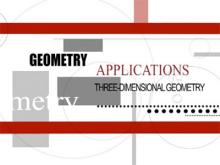
|
VIDEO: Geometry Applications: 3D Geometry | VIDEO: Geometry Applications: 3D Geometry
Topic3D Geometry |
3-Dimensional Figures and Applications of 3D Geometry |

|
VIDEO: Geometry Applications: 3D Geometry, 1 | VIDEO: Geometry Applications: 3D Geometry, 1
Topic3D Geometry DescriptionThis segment introduces Platonic solids, including tetrahedron, cube, and dodecahedron, emphasizing their congruent edges, vertices, and angles. It connects these geometric figures to both natural and man-made structures, setting the stage for exploring 3D geometry applications. This video offers a comprehensive look at the mathematical concepts behind 3D Geometry. Students will gain insights into practical applications and theoretical understanding of the topic, enhancing their ability to visualize and apply these concepts. |
3-Dimensional Figures and Applications of 3D Geometry |
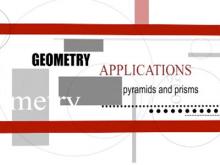
|
VIDEO: Geometry Applications: 3D Geometry, 2 | VIDEO: Geometry Applications: 3D Geometry, 2
Topic3D Geometry DescriptionThis segment explores pyramids, particularly Mayan and Egyptian structures, to distinguish rectangular and square bases. It discusses the volume of truncated pyramids using proportional relationships and introduces the concept of tiered volume reduction through geometric sequences. This video offers a comprehensive look at the mathematical concepts behind 3D Geometry. Students will gain insights into practical applications and theoretical understanding of the topic, enhancing their ability to visualize and apply these concepts. |
3-Dimensional Figures, Pyramids and Applications of 3D Geometry |
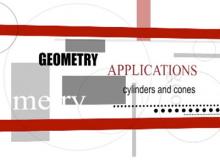
|
VIDEO: Geometry Applications: 3D Geometry, 3 | VIDEO: Geometry Applications: 3D Geometry, 3
Topic3D Geometry DescriptionThis segment examines cylinders, using the Shanghai Tower as a case study. It highlights how adjustments to height and radius affect volume and surface area, demonstrating these principles with geometric calculations and their architectural applications in energy efficiency. This video offers a comprehensive look at the mathematical concepts behind 3D Geometry. Students will gain insights into practical applications and theoretical understanding of the topic, enhancing their ability to visualize and apply these concepts. |
3-Dimensional Figures, Cylinders and Applications of 3D Geometry |

|
VIDEO: Geometry Applications: 3D Geometry, Pyramid Volume | VIDEO: Geometry Applications: 3D Geometry, Pyramid Volume
Topic3D Geometry |
Pyramids |
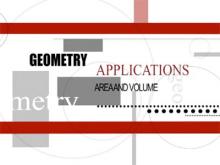
|
VIDEO: Geometry Applications: Area and Volume | VIDEO: Geometry Applications: Area and Volume
TopicArea and Volume |
Applications of Surface Area and Volume, Surface Area and Volume |

|
VIDEO: Geometry Applications: Area and Volume, 1 | VIDEO: Geometry Applications: Area and Volume, 1
TopicArea and Volume DescriptionThis segment explores the concept of density, using the Titanic to demonstrate buoyancy and the relationship between mass and volume. It introduces direct variation, rational functions, and how these principles apply to ship design for optimal floating capacity. |
Applications of Surface Area and Volume, Surface Area and Volume |

|
VIDEO: Geometry Applications: Area and Volume, 1 | VIDEO: Geometry Applications: Area and Volume, 1
TopicArea and Volume DescriptionThis segment explores the concept of density, using the Titanic to demonstrate buoyancy and the relationship between mass and volume. It introduces direct variation, rational functions, and how these principles apply to ship design for optimal floating capacity. |
Applications of Surface Area and Volume, Surface Area and Volume |

|
VIDEO: Geometry Applications: Area and Volume, 2 | VIDEO: Geometry Applications: Area and Volume, 2
TopicArea and Volume DescriptionThis segment focuses on surface area, using the Louvre Pyramid to highlight geometric tessellations and triangular net calculations. It explains the surface area formula for pyramids and how these calculations are applied in architectural design and material efficiency. |
Applications of Surface Area and Volume, Surface Area and Volume |
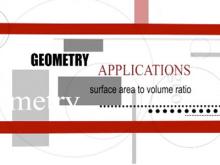
|
VIDEO: Geometry Applications: Area and Volume, 3 | VIDEO: Geometry Applications: Area and Volume, 3
TopicArea and Volume DescriptionThis segment explores the surface area-to-volume ratio using the Citigroup Building as an example. It discusses how this ratio impacts energy efficiency in buildings and compares it to natural examples like polar bears and snakes for context. |
Applications of Surface Area and Volume, Surface Area and Volume |

|
VIDEO: Ti-Nspire Mini-Tutorial, Video 7 | VIDEO: TI-Nspire CX Mini-Tutorial: Graphs of Absolute Value Functions
In this Nspire CX tutorial absolute functions are graphed, including graphs centered at the origin, graphs displaced along the x-axis, and graphs displaced along the y-axis. Note: This video does not include audio. |
Special Functions |

|
VIDEO: Ti-Nspire Mini-Tutorial, Video 10 | VIDEO: TI-Nspire CX Mini-Tutorial: Graphs of Quadratic Functions in Standard Form with Sliders
In this TI-Nspire CX tutorial learn how to graph quadratic functions in standard form using sliders for the values of a, b, and c. |
Graphs of Quadratic Functions |

|
VIDEO: Ti-Nspire Mini-Tutorial, Video 11 | VIDEO: TI-Nspire CX Mini-Tutorial: Graphs of Quadratic Functions in Vertext Form with Sliders
In this TI-Nspire CX tutorial learn how to graph quadratic functions in vertex form using sliders for the values of h and k. |
Graphs of Quadratic Functions |

|
VIDEO: Ti-Nspire Mini-Tutorial, Video 12 | VIDEO: TI-Nspire CX Mini-Tutorial: Linear Functions and Their Inverses
In this Nspire CX tutorial linear functions in slope-intercept form are graphed using sliders. Then the inverse functions are graphed. Their symmetry about the graph of y = x is explored. |
Functions and Their Inverses |